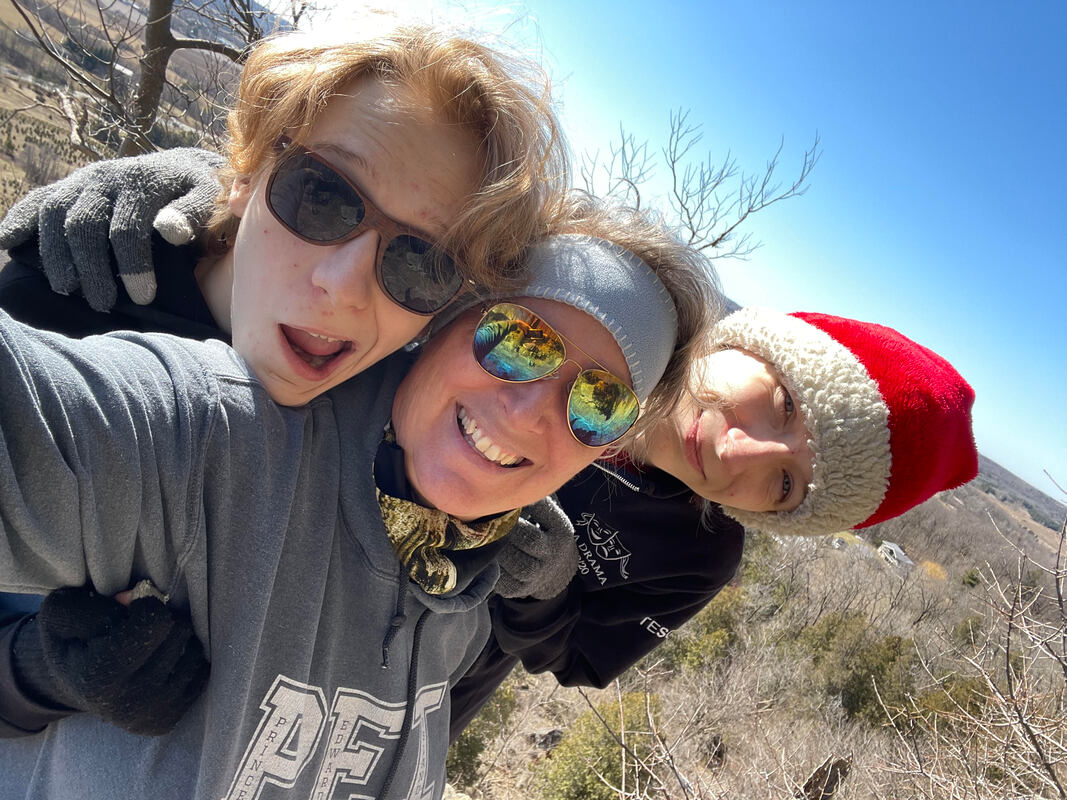Those familiar with the Daily Five and Literacy Café and their mathematical counterpart will have a sense of what "centers" can look like at the primary level, but there is precious little to support guided teaching and independent learning at the intermediate level, I have found. Researchers I have read wax poetic about helping students develop growth mindset, and supporting a variety of learning needs, but the "how to" manual seems to be missing.
So, inspired by a math workshop I attended this summer, and supported by my school's instructional coach and another grade-level colleague at my school, I set about developing a set of generic "centers" earlier this year. The idea was to use the curriculum expectations for each unit to develop specific learning activities for said "centers", so that once students were "trained" in the classroom management particulars, they could monitor their own learning, freeing me up to focus on guiding small groups of students with similar needs and conferencing with individual students to teach and assess.
It's been a work in progress, to say the least.
Given that I had six classes to teach, many of which -- pre-reorg -- were quite large, and given that my LCD didn't work for a week, and given that I was still acclimatizing to a new school, things did not begin as smoothly as I had envisioned. :)
But, knowing how important the process is for students to develop their identity in relationship to math, especially at the Intermediate level, I pressed on, determined to make enthusiastic, independent math learners out of my students!
After completing a whole class introductory unit from TIPS as well as some real life problems in Number Sense, my school's instructional coach and I sat down to map out a series of Integers learning activities, and hunt down an end-of-unit test to measure growth.
Permitting students to choose which center(s) they wanted to spend time at allowed them to become key players in their learning, and to develop more metacognitive skills. (I.e.: What do I know? What can I already do? What am I struggling with? How can I improve this skill?)
students who develop a sense of identity which resonates with the discourse of mathematics are more likely to continue with their studies than their peers who do not develop such a sense of identity." | Learning Goals and Success Criteria It quickly became apparent that for many of the students (especially those in my grade 8 class), this was a new way of doing business in math. We therefore provided them with the learning goal and success criteria, rather than co-constructing these. Hopefully we will move into co-construction of criteria later in the year, as students become more comfortable with self-assessment. Providing a learning goal up front helps students to focus their learning throughout a unit, and the success criteria offer specific language which students and teachers can use for descriptive feedback as they work through the various learning tasks within a unit. |
As per Growing Success and current assessment practice, teachers assess students using various tools and methods. Watching students work through a problem and taking anecdotal notes, questioning students about their mathematical thinking and listening to their responses, conferring with individual or small groups of students, and -- sometimes -- providing paper and pencil tasks such as a quiz or a test are all pieces of evidence that can be considered for assessment purposes to drive instruction, or to formulate a summative mark at the end of a unit.
| A Baseline for Geometry One thing we learned from our first attempt with Integers was that we needed to get a sense of what students already knew and could do, skill- and strategy-wise, in order to plan for instruction in small groups. We therefore developed a short, simple "Show what you know" diagnostic with tasks that would demonstrate to what extent students already knew some of the necessary vocabulary and end-of-year expectations. (The grade 7 one is shown to the right.) |
| ||
Developing Small Groups
My Grade 8 class surprised me. Many of them had a fairly solid foundation in geometry already, and a few of them did exceptionally well, leading me to consider how I could best differentiate for their learning needs (With the help of my instructional coach, I developed several problems -- based on Marian Small's work as well as the curriculum and the textbook -- and also challenged these students to create a center or lesson to show what they already knew in a particular area to another group of students. We will see how that unfolds in the weeks ahead!)
The students who did not "ace" the diagnostic fell into three primary categories:
- those who needed help refining their use of protractors
- those who would benefit from some guided instruction with 3D shapes to help develop their spatial sense
- those who need to develop their mathematical vocabulary in order to communicate with clarity and precision
I proceeded to develop a series of small group and individual meeting sessions, which I post on the overhead at the beginning of each class so that students know who is working independently, and who is meeting with Ms. Teschow.
A reminder of the unit learning goal and success criteria is also posted. (See below.)
Meeting with students in small groups provides an excellent way to really get a sense of what they know. I am finding that this way of teaching helps me to clarify mathematical misunderstandings in the moment and do some on-the-spot precision teaching as needed for individual students.
Working through centers also allows the more mathematically advanced students to work on math of interest to them, rather than being held back by their peers with other needs.
| | Students Knowing Themselves As the work of Boaler, Dweck and others researching mindset shows, students need to develop an understanding of themselves as learners in order to authentically improve as thinkers. Regular, specific self-assessment opportunities can help to develop metacognitive skills. |
One challenge I am finding is communicating progress effectively to families. Whereas in previous years, I have had one class for whom I teach most/all subjects, this year, I have several classes, not all the same grade and subject. Much as I would like to, it is impossible to make weekly or even monthly phone calls to 120 or more parents! And yet, the progress report in November and the First Term Report Card in January don't seem adequate tools to share all the learning that's happening in Ms. T's classroom!
I am still working on ways to communicate descriptive feedback in ways that are effective for students and parents, and manageable for me as a teacher.
| When meeting with students, I record observations about their work and/or our conversations in my marks tracking binder (well, on a clipboard this year; I'm finding it more effective to have multiple clipboards to manage so many classes). I also provide oral feedback to students as we work together. This allows me to see many students each day/week, and balance recording progress and communicating next steps with accomplishing the personalized teaching of as many students as possible. What it doesn't allow me to do is communicate regularly and in great detail with families, many of whom may be wondering what strange things are happening in Ms. Teschow's math class! :) | |
I'm still searching for ways to communicate effectively while allowing the time needed to have meaningful conferences and check-in points with students throughout the week.
A Work in Progress
Our reflections from the somewhat scattered process from the inaugural Integers unit resulted in a far more organized Geometry Unit; I am tremendously enjoying the teaching and learning happening with my Grade 8s in math, and am looking forward to beginning geometry with my Grade 7s. But there is still lots to learn. Will a traditional unit test at the end be enough to capture the growth from the baseline? And if not, how can I incorporate choice into the alternative summative tasks so that students can effectively show what they know in the way that best suits them as learners?
I look forward to answering these questions and many more as the year unfolds, and plan to seek ongoing feedback from the students as to how to improve as we go.
Geometry Centers
For those interested in trying this approach, or looking to supplement their own work in Geometry, feel free to download, modify and use any of the centers below. Please note, you will require polydrons or paper nets, and power polygons. Center 7 for this unit is Blokus.
| Grade 7 Geometry 1 Centers* | Grade 8 Geometry 1 Centers |
|
| ||||||||||||||||||
The ideas for the learning activities in these centers come from the Ontario Math Curriculum document, Marian Small's "Big Questions" and "Eyes on Math" books, and the Grade 7 & 8 "Math Makes Sense" text books.
* Transformational Geometry is coming in Term 2



 RSS Feed
RSS Feed